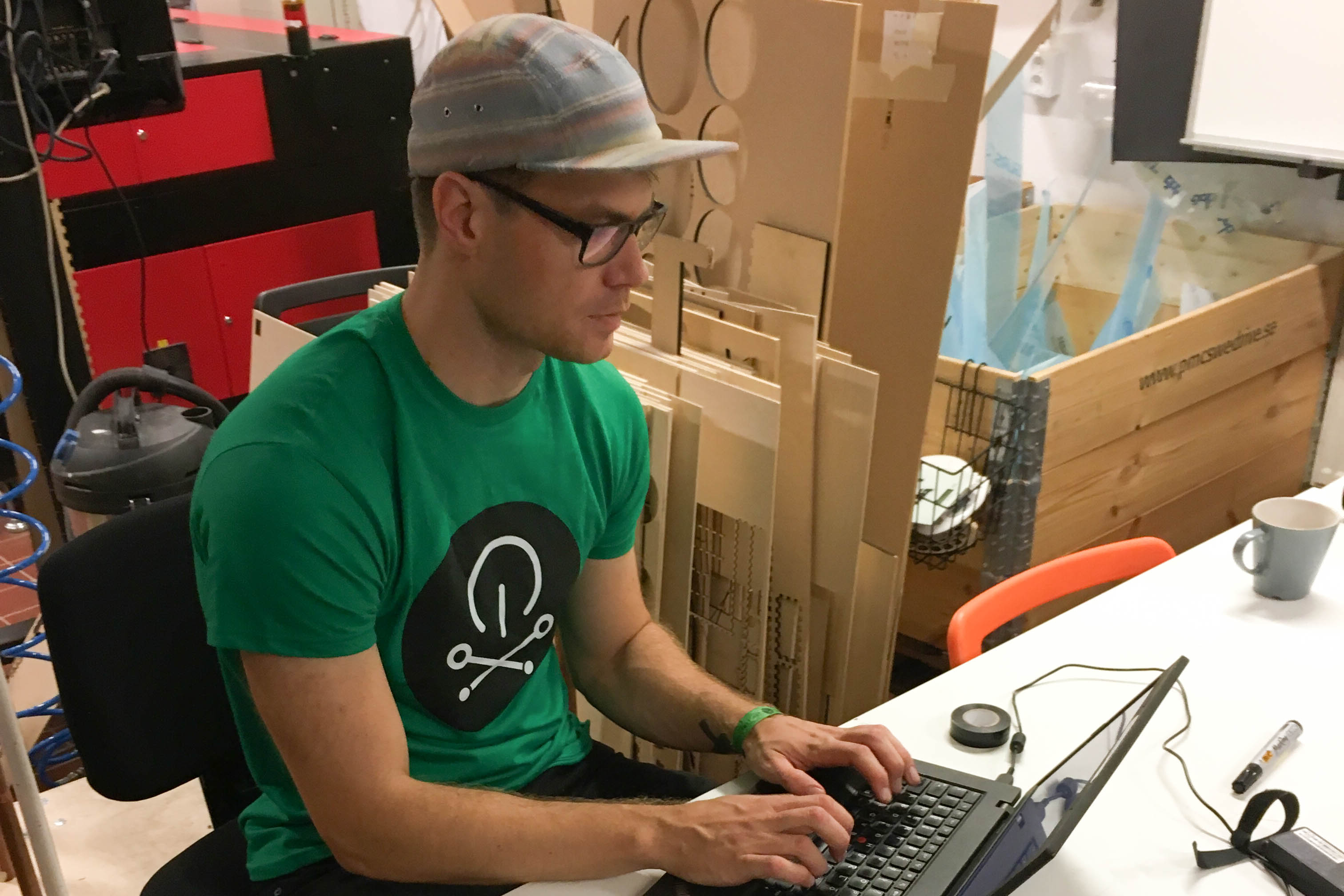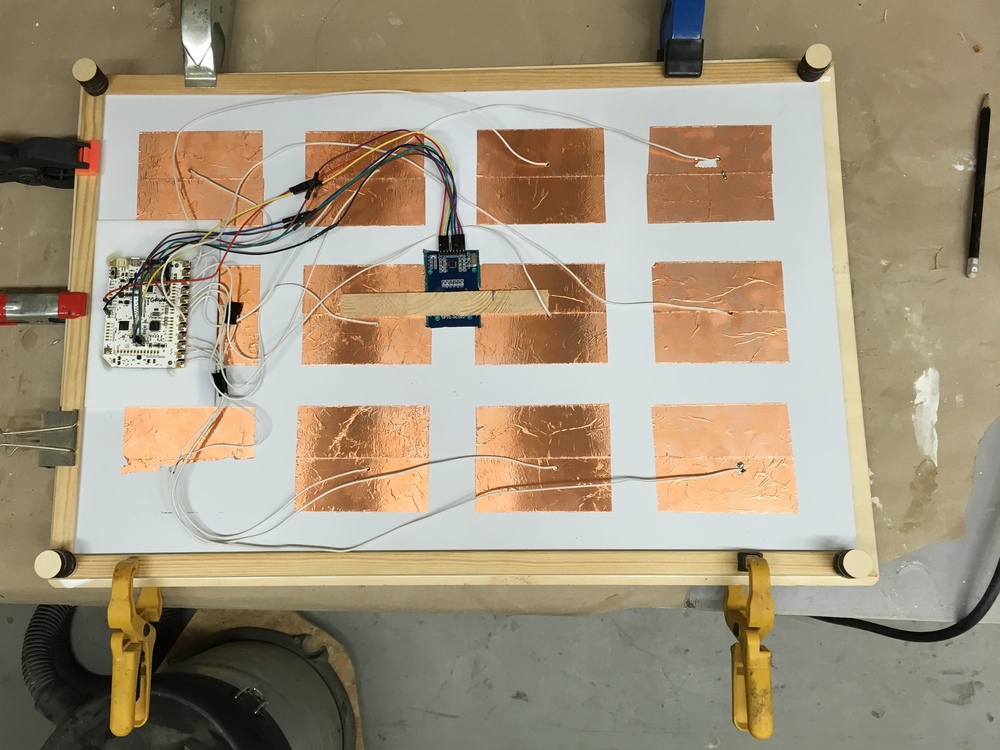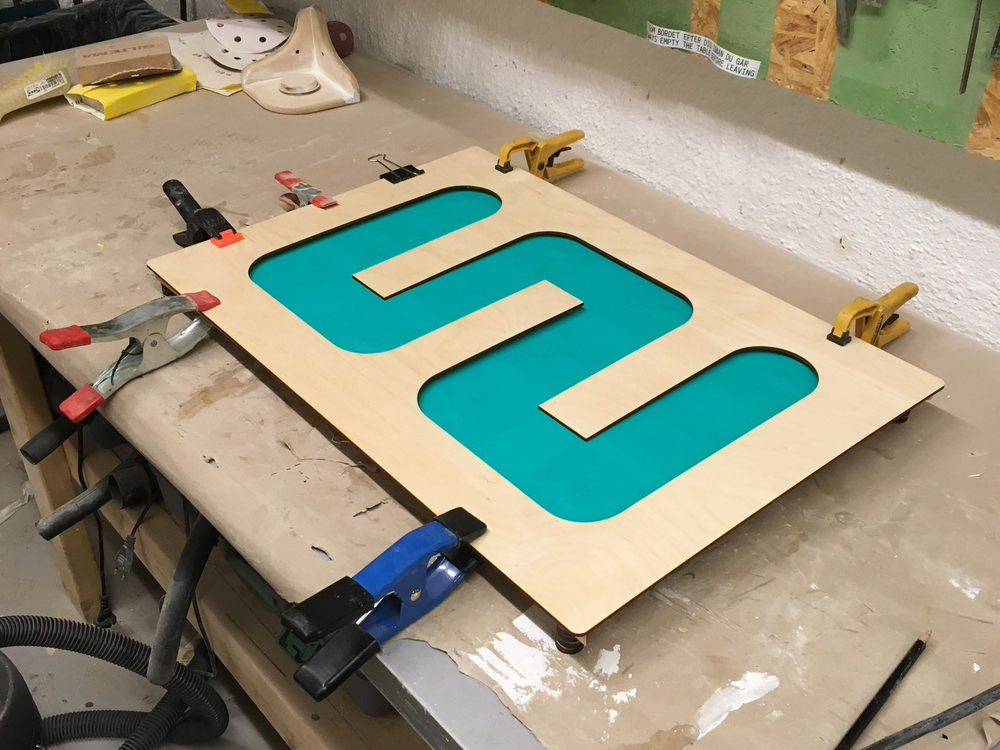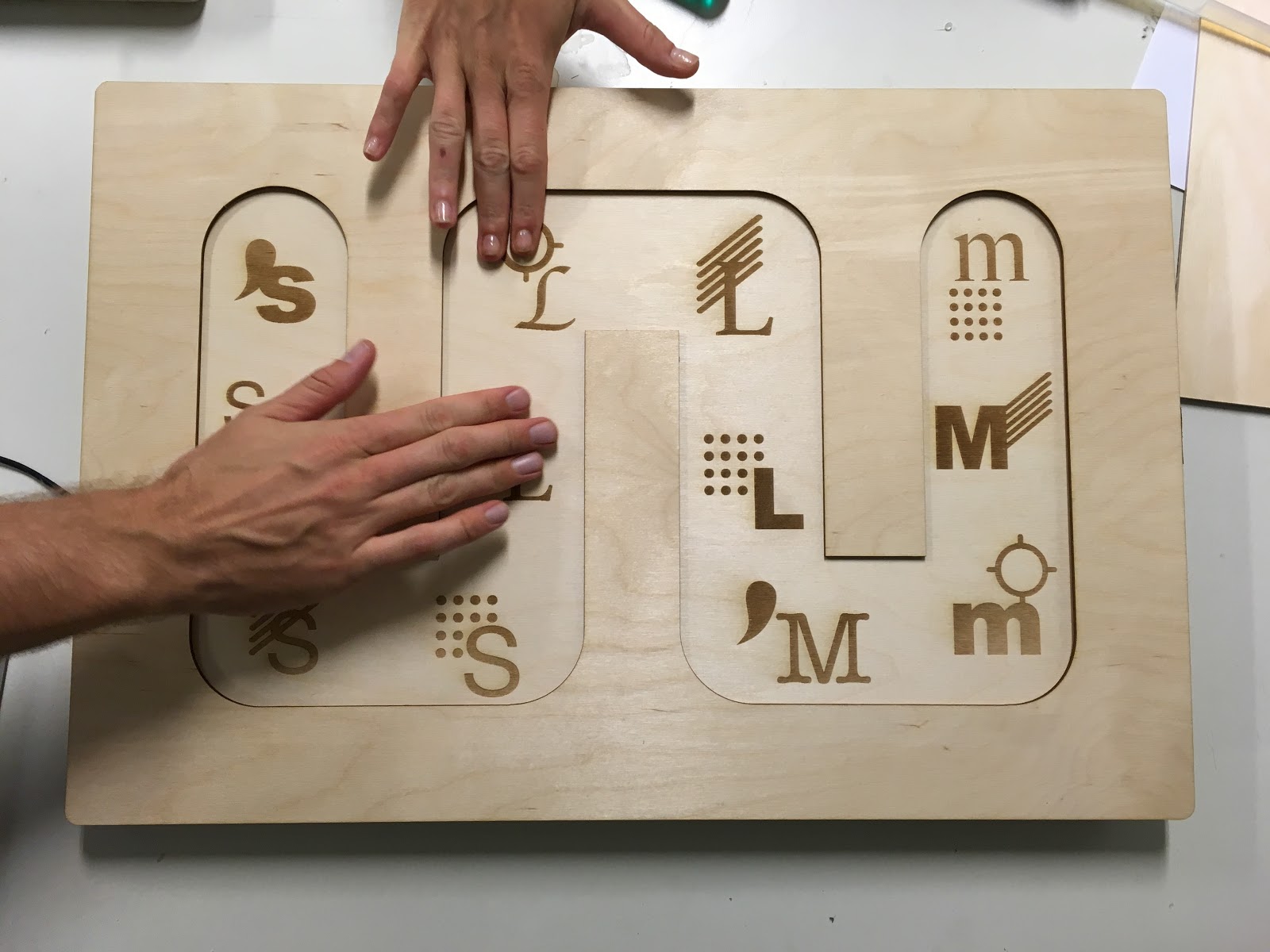Touchy Spacey Data Thingy
Winner of the Spaced-Out Music Challenge at MTF Stockholm 2018, sponsored by SNSA and ESA
A collaboration between Gawain Hewitt, Sabina Barcucci, Johnnie Hård, Eevee Zayas-Garin and Malin Arvidsson
Touchy Spacey Data Thingy is a device for the sonification of data. Designed to provide a visceral interaction to compare data sets, it then presents them as an intuitive graphic interface and a musical instrument. While the instrument could be used to sonify any data, for this project we have specifically worked with satellite data from the ESA and SNSA API to provide a deeper understanding of the relationship between the 3 cities we are from across the seasons, and also to compare two different environments. Data is presented on laser cut images that abstract the data, presenting as a cross between a piece of art and a cartridge for a games console.

To sonify the data, we decided to look to Johannes Kepler, and his work linking harmony with the solar system. After researching his harmonic ideas, we chose to use one of the scales that he constructed to illustrate the different notes that the planets occupied at the aphelion and perihelion positions. This particular scale begins with G (the aphelion position of Saturn) and is only missing the note A. It lacks only the perihelion positions of Earth and Venus. Kepler called this scale cantus durus, which loosely translates as 'sharp' or 'hard' scale. Our own concepts of major and minor had not yet been agreed upon. Combined with our use of just temperament, which Kepler preferred to Pythagorean scales, we have ended up with a very distinctive sounding instrument, which is able to give a clear sonic signature to the data it works with.


For this hackathon we have created a playable proof of concept with three data sets. Further investment will allow us to more deeply investigate how sonification and multi artistic devices like this can help with deeper understanding of complex data. Working alongside researchers and musicians, we will develop a further protoype that is more dynamic in terms of what data we can put into it, and make the musical instrument more expressive.



This MTF and KTH hackathon has allowed us to construct a team with a diverse and symbiotic range of skills. We are very proud of what we have achieved in such a short space of time and believe that both our project, and the team that you have helped to bring together deserve the opportunity to properly explore their potential.